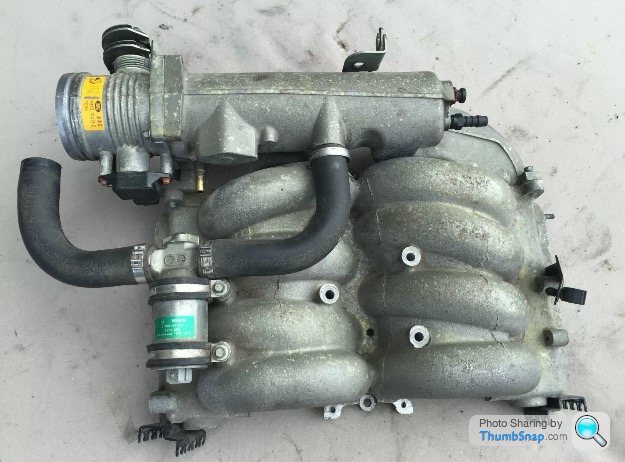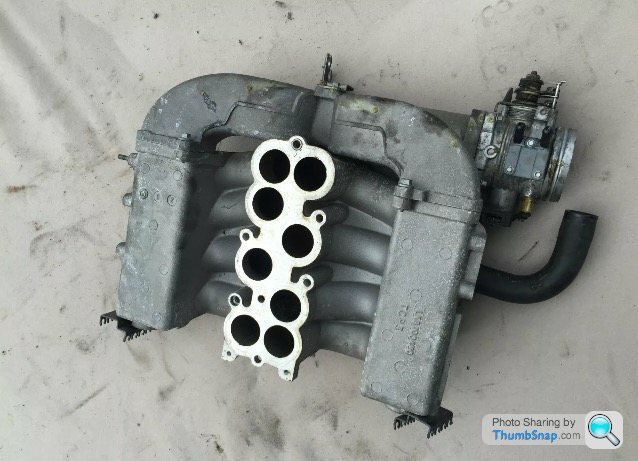Independent runner inlet manifold
Discussion
Just chatting, Rover v8's aren't a high revving engine so wouldn't a longer runner with perhaps a dual plane inlet suit with perhaps increased torque on the lower and midrange revs rather than give it at higher rpm with a relative low redline. As standard a TVR runs out of revs in top gear before tuning for extra power at high rpm, so increased mid range power would really increase acceleration as a road car at least?
eliot said:
That's my my manifold archive linked above.
The p38 thor manifold with it's long thin runners is designed for ...a heavy 4x4 - which means low end torque and no need for high flow at high rpm.
The exact opposite of what you want on a tvr. Read the notes that i got from john edwards who explained the limits of the manifold.
Very interesting read The p38 thor manifold with it's long thin runners is designed for ...a heavy 4x4 - which means low end torque and no need for high flow at high rpm.
The exact opposite of what you want on a tvr. Read the notes that i got from john edwards who explained the limits of the manifold.
 . The picture below is what was in my head from the start so obviously someone has already got there.
. The picture below is what was in my head from the start so obviously someone has already got there. I used that oem Thor manifold as the example of improved midrange torque, as a road car midrange torque improves acceleration. Race cars use high rpm but road cars don't. A TVR still weights a tad over a metric ton and that isn't light compared to real race cars in the 700-800kg mark or even less. Improved low end torque is key and maintaining it rather than increase a rev limiter to get the max bhp figure, of course tuning is an art and I appreciate that but those inlet manifolds below seem to do the improved low end torque whilst maintaining high end flow.
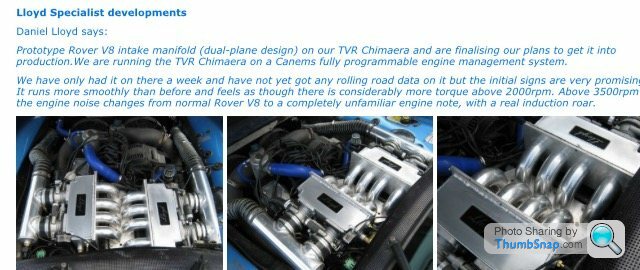
Fabulous words. I started this discussion but your words have detailed it. That Thor inlet gave the 4.6 increased torque and bhp over the previous version and I remember from my Vauxhall days seeing a standard Astra gte 16v out drag a current then Astra Btcc race car at santa pod.
More low down torque makes a faster road car of which a Thor manifold achieves at at very reasonable price
of which a Thor manifold achieves at at very reasonable price 
More low down torque makes a faster road car
 of which a Thor manifold achieves at at very reasonable price
of which a Thor manifold achieves at at very reasonable price 
I think the original plan was to get a Thor manifold working on a tvr installation and measure its torque and real time drivability. Mentioned above was a max 280bhp using the Thor manifold but it's toque measurements seem to be overlooked.
The idea that not all tvr owners drive their rv8 engines cars at max rpm on every gear change, so to do an inlet mod with factory available parts that increases torque in the rev range that a majority of drivers naturally drive to would or could have been a good alternative to increased capacity.
That was the theory at least
The idea that not all tvr owners drive their rv8 engines cars at max rpm on every gear change, so to do an inlet mod with factory available parts that increases torque in the rev range that a majority of drivers naturally drive to would or could have been a good alternative to increased capacity.
That was the theory at least
drlloyd said:
No problem. 
Completely agree regarding runner length vs camshaft spec. The longer runner lengths of those intake manifolds are more suited to Land-Rover spec camshafts. We have actually seen Rover V8 engines making more power on 'lower' spec camshafts (i.e.: less overlap and less duration) with the same longer runner length intake manifolds. All tested on the same hub dyno.
For arguments sake, a 4.0 engined chimera completely standard from the tvr factory, compared to a Thor manifolded 4.0 p38 Range Rover. 
Completely agree regarding runner length vs camshaft spec. The longer runner lengths of those intake manifolds are more suited to Land-Rover spec camshafts. We have actually seen Rover V8 engines making more power on 'lower' spec camshafts (i.e.: less overlap and less duration) with the same longer runner length intake manifolds. All tested on the same hub dyno.
How do the torque figures compare?
I'm really interested that's all

Ok so no one has comparable torque figures.
That seems a bit strange as there is a lot of figures going around after modification.
Below are a couple of interesting pictures of a modified 3.9.
Claimed figures are 250bhp with 270ftlb of torque. Not sure where in the rev range though. Looks like a version of a Thor manifold.
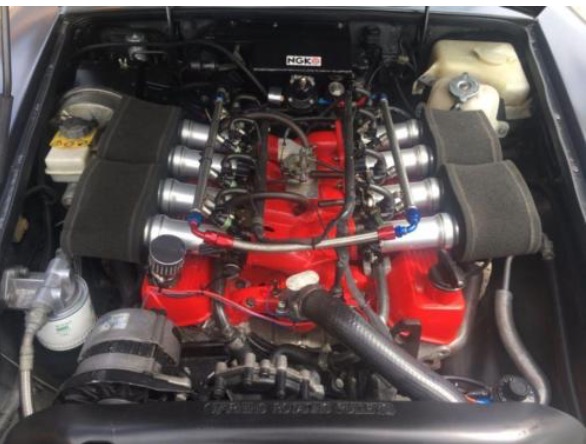
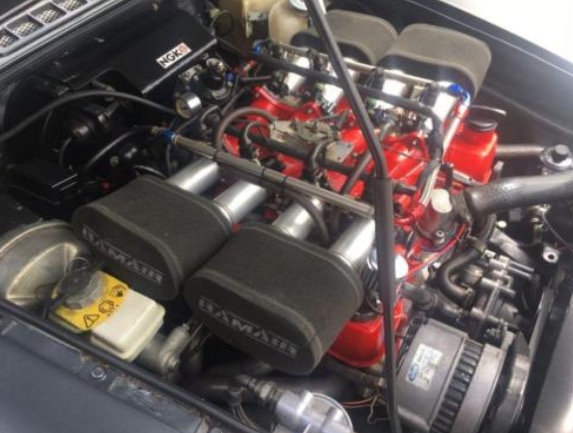
That seems a bit strange as there is a lot of figures going around after modification.
Below are a couple of interesting pictures of a modified 3.9.
Claimed figures are 250bhp with 270ftlb of torque. Not sure where in the rev range though. Looks like a version of a Thor manifold.


Boosted LS1 said:
Turbo's can be very responsive especially if the stock compression is maintained.
Under bonnet temps are high anyway without an additional heat source. I'm not one to cut out cooling vents and holes although I'm sure a turbo conversion is extremely good.I'm ok with n/a power but I'm looking at this dual plane inlet conversion and it seems all I've found don't cross over the middle four inlets to Eliminate charge-robbing between consecutive firing cylinders. Without obviously changing the firing order, a middle crossover inlet would give a LRLRLRLR induction order.
Dominic TVRetto said:
From what I understand, if you are looking at designing an intake system (dual plane or not), there are a number of considerations to maximise the volumetric efficiency within the cylinders and increase the torque.
Ignoring cylinder firing order, some of the considerations include (in no particular order)..:
1. Plenum volume
2. Plenum shape (minimise turbulence, pressure wave tuning, etc)
3. manifold runner length (tuned to rpm you wish to maximise torque at)
4. manifold runner cross-sec. area (corresponding to flow at rpm you wish to maximise torque at)
5. manifold runner shape (packaging & necessity vs. least restriction to flow, minimising fuel dropout etc)
6. Distance between inlet tract opening & plenum "roof" (tuning helmholtz resonance at rpm you wish to maximise torque at)
There are loads of factors I will not have touched upon, as this is an extremely complex area which I know very little about but find extremely interesting.
Something I found useful as an intro - and comparatively brief - was this pdf here.
I cannot comment on it's scientific exactness, but it will give you an intro into the concepts and terminology involved in this area...
HTH,
Dom
It's very interesting to read. I've got some good ideas of which are explained and it gives me more ideas Ignoring cylinder firing order, some of the considerations include (in no particular order)..:
1. Plenum volume
2. Plenum shape (minimise turbulence, pressure wave tuning, etc)
3. manifold runner length (tuned to rpm you wish to maximise torque at)
4. manifold runner cross-sec. area (corresponding to flow at rpm you wish to maximise torque at)
5. manifold runner shape (packaging & necessity vs. least restriction to flow, minimising fuel dropout etc)
6. Distance between inlet tract opening & plenum "roof" (tuning helmholtz resonance at rpm you wish to maximise torque at)
There are loads of factors I will not have touched upon, as this is an extremely complex area which I know very little about but find extremely interesting.
Something I found useful as an intro - and comparatively brief - was this pdf here.
I cannot comment on it's scientific exactness, but it will give you an intro into the concepts and terminology involved in this area...
HTH,
Dom

The hard part is getting the middle four inlets crossed over and maintaining the minimum factory internal diameter of those runners. I have a good idea how to do that and it doesn't use conventional pipework which keeps the height down to fit under a standard bonnet which is a huge hurdle to start with

I understand, i think it's a matter of not making the dual plenum a regular shape and possibly using baffles inside to correct any volume issues. I can make these adjustable to a degree, to give longer or shorter runner length and also create a Venturi to increase air flow and reduce air pressure if I can't get a specific runner length under the bonnet. I'm a long way off at the moment though.
My biggest headache is getting the electronic side of things working. That I really haven't a clue but I suppose that's a future different thread
My biggest headache is getting the electronic side of things working. That I really haven't a clue but I suppose that's a future different thread

drlloyd said:
RobXjcoupe said:
For arguments sake, a 4.0 engined chimera completely standard from the tvr factory, compared to a Thor manifolded 4.0 p38 Range Rover.
How do the torque figures compare?
I'm really interested that's all
Hello Rob. Sorry for the late response, don't get on here often. How do the torque figures compare?
I'm really interested that's all

We have never had a Thor manifolded 4-litre P38 on the dyno and it is difficult to accurately compare a rear-wheel drive manual transmission to a 4WD auto transmission - due to the differences in transmission losses and the subsequent errors in estimating those losses. The only way to accurately work out the answer to your question is with an engine dyno and really you need to take out any other variables as well - e.g.: difference in camshaft profile, compression ratio, etc.
If you ever want a significantly more prompt response, contact me through my work e-mail!


Gassing Station | Griffith | Top of Page | What's New | My Stuff




